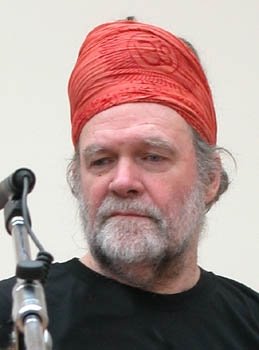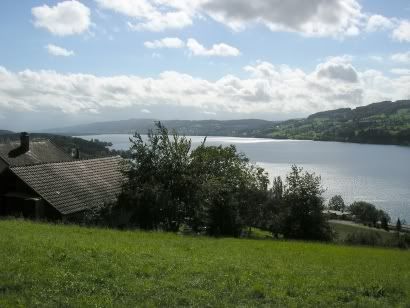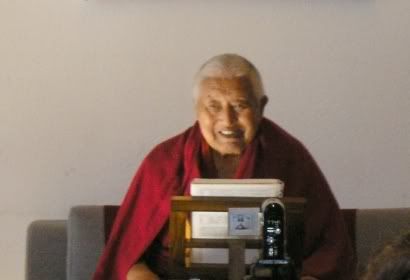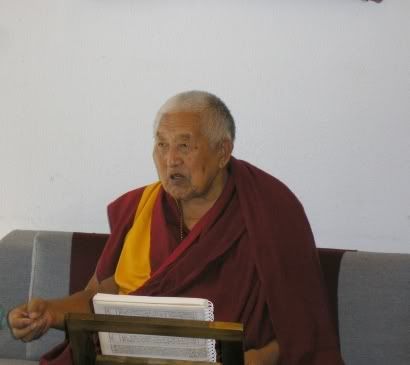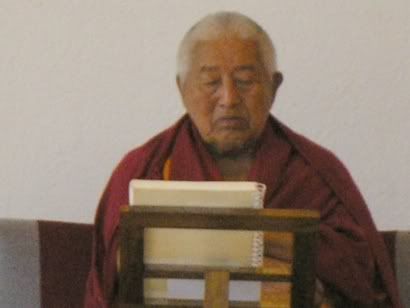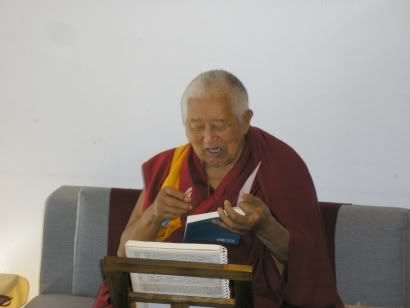 The Story of Barlaam and Josaphat
The Story of Barlaam and JosaphatThere is a scene in the Merchant of Venice in which the suitors of Portia, a spirited young heiress, are shown three caskets, one of gold, one of silver, and one of lead. One of them contains Portia’s portrait, and according to her father’s will the suitor who chooses the right casket, the one containing the portrait, will be able to marry Portia. The Prince of Morocco chooses the gold casket, but on opening it he finds only a skeleton and some verses beginning All that glitters is not gold; Often have you heard that told.
Similarly the Prince of Aragon, on being shown the caskets, chooses the silver one and to his chagrin finds the portrait of a ‘blinking idiot’ and some sardonic verses. The third suitor is Bassanio, a young Venetian with whom Portia herself is secretly in love. He chooses the lead casket, where he finds Portia’s portrait and verses inviting him to claim the lady ‘with a loving kiss’. Few of those who have seen the play will have known that Shakespeare took the theme of the Three Caskets from the romance of Barlaam and Josaphat, a Christianized version of episodes from the life of the Buddha, which he found in The Golden Legend (1483), Caxton’s version of a French translation of the Legenda Aurea, a work compiled in Latin by the thirteenthcentury Dominican friar Jacobus de Voragine who became Archbishop of Geneva.
The story of the monk Barlaam and prince Josaphat underwent many changes before eventually passing from Voragine to Caxton and from Caxton to Shakespeare, but in Caxton’s English version, still very readable, incidents which are parts of the Buddha’s biography as handed down in Buddhist tradition can nevertheless still be discerned. The story begins in a legendary India, which is represented as being ‘full of Christians and of monks’. At this time there arose a powerful king named Avennir who persecuted the Christians, and especially the monks. Nonetheless, a friend of the king who was also his chief minister was inspired to leave the palace and become a monk. When the king heard of this he was beside himself with rage and ordered a search to be made for the monk, who was eventually found and brought before the king. On seeing his former minister ‘in a vile coat andmuch lean for hunger’ Avennir called him fool and madman and wanted to know why he had changed his honour into disgrace and made himself a mockery. If he was willing to listen to reason, the monk replied, then he should put from him his enemies. The king naturally wanted to know who his enemies were. They were anger and greed, the monk explained, for they obscured and hindered the mind, so that the truth might not be seen. ‘The fools despise the things that be’, the monk continued, ‘like as they were not, and he that hath not the taste of the things that be, he shall not use the sweetness of them, and may not learn the truth of them that be not.’
I was greatly struck by these words. Behind them, beneath all the layers of adaptation and modification, I could see an important teaching of the Buddha that must have come from one of the traditional Indian biographies. The spiritually immature despise the real because they see it as unreal; and he that has no experience of the real will not benefit from the happiness it brings, nor, since he sees the real as unreal, will he see the unreal as unreal. This is reminiscent of a verse in one of the best known Buddhist scriptures: ‘Those who, having known the real (sara) as the real, and the unreal (asara) as the unreal, they, moving in the sphere of right thought,will attain the real’ (Dhammapada 12). Whoeverwas originally responsible for this version of the story of Barlaam and Josaphat must have felt that the monk’s teaching to the king was not particularly Christian, as indeed it is not, for he credits the monk with having gone on to ‘show many things of mystery of the incarnation’, which is obviously out of place and very likely was added at some stage. Be that as it may, Avennir was not impressed by the monk’s teaching. Had he not promised to put away anger, he tells him, he would have burned him alive. Let him go now, lest he should do him some harm.
Meanwhile, it so happened that a son was born to the king, who hitherto had been childless. The boy was called Josaphat, which is not really a proper name but the form assumed by the Sanskrit word ‘bodhisattva’ after it had been transcribed from the alphabet of one language into that of another, and from that into yet another, thus becoming a little further removed from its original spelling and pronunciation each time. In the traditional biographies the term ‘Bodhisattva’ refers to the Buddha in the pre-Enlightenment phase of his career, the word meaning ‘Enlightenment-being’ or ‘one bent on Enlightenment’. On the birth of Josaphat ‘the king assembled a right great company of people for to sacrifice to his gods for the nativity of his son, and also assembled fifty-five astronomers, of whom he enquired what should befall of his son.’
In the Abhiniëkramaœa Sûtra or ‘Sûtra of the Great Renunciation’, one of the canonical biographies of the Buddha, the astrologers assembled by King Suddhodana, the Bodhisattva’s father, predicts that his son will become either a universal monarch or a Buddha, an Enlightened One. A sage who has arrived from the Himalayas, however, predicts that he will definitely become a Buddha. King Avennir’s astronomers tell him that Josaphat will be ‘great in power and in riches’; but one of them, wiser than the others, predicts that the child will be a Christian, a member of the religion that the king persecutes. Disturbed by the prediction, Avennir took measures to ensure that Josaphat does not hear about Jesus Christ. They are the same measures taken by Suddhodana, in the traditional biographies of the Buddha, to ensure that Siddhartha does not learn about the realities of human existence. In Caxton’s words:
And when the king heard that, he doubted much, and did do make without the city a right noble palace, and therein set he his son for to dwell and abide, and set there right fair younglings, and commanded them that they should not speak to him of death, ne of old age, ne of sickness, ne of poverty, ne of no thing that may give him cause of heaviness, but say to him all things that be joyous, so that his mind may be esprised with gladness, and that he think on nothing to come. And anon as any of his servants were sick the king commanded for to take them away, and set another, whole, in his stead, and commanded that no mention should be made to him of Jesus Christ.Except for the reference to Jesus, the Buddhist will find himself on familiar ground here. He will also know what follows. But at this point the story of Barlaam and Josaphat, as translated by Caxton, is interrupted by a tale of palace intrigue, in which King Avennir tries to trick his chief noble into admitting that he was a Christian by telling him that he has decided to become a monk, and in which the noble tricks the king, and saves his own life, by becoming a monk in order, as he says, to accompany the king into the desert and serve him there. The story is then resumed, and the Buddhist again finds himself on familiar ground. When Josaphat grew up he wondered why his father had so enclosed him, and became greatly depressed that he could not go out. On hearing this the king made arrangements for ‘horses and joyful fellowship’ to accompany him, but in such a way that he should see no distressing sight.
And on a time thus as the king’s son went, he met a mesel (leper) and a blind man, and when he saw them he was abashed, and enquired what them ailed, and his servants said: These be passions (sufferings) that come to men. And he demanded if those passions come to all men, and they said: Nay. Then said he: Be they known which men shall suffer these passions without definition? And they answered: Who is he that may know the adventures of men? And he began to be much anguishous for the incustomable thing thereof. And another time he found a man much aged which had his cheer (face) frounced (wrinkled), his teeth fallen, and was all crooked for age.
Whereof he was abashed, and he desired to know the miracle of this vision. And when he knew that this was because he had lived many years, then he demanded what should be the end, and they said: Death; and he said: Is then death the end of all men or of some? And they said for certain that all men must die. And when he knew that all should die, he demanded them in how many years that should happen, and they said: In old age or four score years or a hundred, and after that age the death followeth. And this young man remembered oft in his heart these things, and was in great discomfort, but he showed him much glad tofore his father, and he desired much to be informed and taught in these things.
Josaphat has now seen the first two, and heard about the third, of the Four Sights that are described at length, and with a wealth of detail, in the traditional biographies of the Buddha; but he has yet to see the fourth sight, that of a monk. In the story of Barlaam and Josaphat it naturally is a Christian monk that he meets. The monk’s name is Barlaam. The derivation of the name is uncertain: it may be a corrupt form of the Sanskrit word bhagavan, meaning ‘lord’. Barlaam is described as ‘a monk of perfect life and good opinion that dwelled in the desert of the land of Senaar’. Coming to know about Josaphat by divine inspiration, he disguised himself as a merchant and gained access to him by telling ‘the greatest governor of the king’s son’ that he had a miraculous precious stone to sell and wished to offer it to the prince. The governor wanted to see the precious stone, but on hearing that it could be safely seen only by one who was wholly chaste he changed his mind and brought him to Josaphat, who received him honourably.
Barlaam told him he did well in taking no heed of his ‘littleness that appeareth withoutforth’. He was like the king whose barons were displeased with him for getting down from his chariot and humbly saluting to poor men, thus compromising his royal dignity. In order to teach them a lesson the king ordered four chests to be made. Two of the chests he covered with gold and jewels and filled and with dead men’s bones and filth. The other two he covered with pitch and filled with precious jewels and rich gems. Here we obviously have the originals of the Three Caskets in The Merchant of Venice, where despite his more romantic handling of the theme Shakespeare draws much the same moral as Barlaam, who continues:
And after this the king do call his great barons…and did do set these four chests tofore them, and demanded of them which were most precious, and they said that the two that were gilt were most of value. Then the king commanded that they should be opened, and anon a great stench issued out of them. And the king said: They are like them that be clothed with precious vestments and be full withinforth of ordure and of sin. And after he made open the other and there issued a marvellous sweet odour. And after, the king said: These be semblable to the poor men that I met and honoured, for though they be clad in foul vestments, yet shine they withinforth with good odour of good virtues, and ye take none heed but to that withoutforth, and consider not what is within.Having related this apologue, Barlaam preached Josaphat a long sermon about the creation of the world, about the day of judgement, and about the reward of good and evil. This he followed up with a series of apologues, some of them quite amusing, on the foolishness of idol worship, the fallaciousness of worldly pleasure, the difference between true and false friendship, and the inevitability of death. Several of the apologues have, to me, a familiar, almost Buddhistic ring to them, especially the one on true and false friendship. There was a man who had three friends. He loved the first friend as much as himself, the second less than himself, the third little or naught. It so happened that this man was in danger of his life, and was summoned before the king. He ran for help to his first friend, reminding him how much he had always loved him. But the friend refused to help, saying he had to spend the day with other friends, and in any case he did not know him. The man went sadly to his second friend, who excused himself from accompanying him to the king, saying he had many responsibilities; but he would accompany him as far as the palace gate. At last the man went to his third friend. ‘I have no reason to speak to thee,’ he admitted, ‘ne I have not loved thee as I ought, but I am in tribulation and without friends, and pray thee that thou help me.’
The third friend readily agreed to the man’s request, saying, ‘I confess to be thy dear friend and have not forgotten the little benefit thou hast done to me, and I shall go right gladly with thee tofore the king, for to see what shall be demanded of thee, and I shall pray the king for thee.’ The first friend, Barlaam explained, was possession of riches, for the sake of which man puts himself in many dangers, and of which he can take with him, when death comes, only the winding sheet in which he will be buried. The second friend was his sons, his wife, and his kin, who can go with him only as far as his grave, after which they will return home and get on with their own lives. The third friend was faith, hope, and charity, and other good works we have done, which when we leave our bodies may go before us and pray for us to God, and may deliver us from our enemies the devils.
The first time I read this apologue, in Caxton’s English version, it at once put me in mind of the old morality play of Everyman which I saw at a London theatre during the War. This ballet moved me more deeply than had the play on which it was based, with which I was already familiar. On the drop curtain Blake’s ‘Ancient of Days’, enormously enlarged, bent over the Deep with his compasses creating the world. Then, out of the darkness, came a tremendous voice, declaring:
I behold here in my majesty How that all beings be to me unkind, Living without fear in worldly prosperity, On earthly treasure is all their mind.God therefore sends a messenger to Everyman, requiring him to appear before him. The ‘mighty messenger’ is Death. On receiving the message Everyman runs in turn to his friends Fellowship, Kindred, Cousin, and Goods, but none is willing to go with him on his journey. At length he calls out to his Good Deeds, asking her where she is. But she is ‘called in ground’, his sins having bound her so tightly that she is unable to move. He releases her, and she goes with him on his journey, as does Knowledge, to whom the play’s unknown author gives the memorable lines:
Everyman, I will go with thee and be thy guide, In thy most need to go by thy side.The play may be derived from a Dutch close counterpart, as one scholar believes; or, alternatively, it may be based on Barlaam’s apologue on true and false friendship, publication of The Golden Legend having preceded the composition of Everyman by about twenty-five years. In any case, the play is a work of something like genius and must have touched the hearts of the audience for which it was written, including as it does a universal truth – the truth that ‘you can’t take it with you’.
When he had been fully instructed by Barlaam, Josaphat wanted to leave his father and follow the monk. Barlaam approved his resolution, and to illustrate it he related another apologue; but he did not agree that Josaphat should follow him into the desert. Instead, he should wait until it was the right time for them to meet. He then baptized Josaphat and ‘returned into his cell’. Shortly afterwards Avennir heard that his son had become a Christian. On the advice of his friend Arachis he sought out an old pagan hermit who resembled Barlaam and instructed him to engage in public debate with the pagan masters. First he should defend the Christian faith, then allow himself to be defeated by the arguments of the pagans and revert to paganism. In this way Josaphat would lose faith in Christianity and follow suit. But Josaphat was not deceived. He told the false Barlaam, whose name was Nachor, that if he was defeated by the pagan masters he would, when he became king, tear out his tongue with his own hands for having dared to teach a king’s son a false religion. Judging that he had more to fear from the son than from the father, who had promised him immunity whatever the result of the debate, he attacked the gods of paganism with great vigour.
The Chaldees worshipped the elements, the Greeks worshipped gods and goddesses who were guilty of the grossest immorality, and the Egyptians worshipped animals, whereas Christians worshipped ‘the son of the right high king that descended from heaven and took nature human’. He then defended Christianity so clearly and convincingly that the pagan masters were discomfited and did not know what to say. Josaphat was overjoyed at the false Barlaam’s victory. He told him privately that he knew who he really was, converted him to Christianity, and sent him into the desert, where he was baptized and led the life of a hermit. On coming to hear of these things an enchanter named Theodosius approached the king and advised him to take away his son’s present attendants and replace them with beautiful, well-adorned women who should be instructed never to leave the prince, for ‘there is nothing that may so soon deceive the young man as the beauty of women’. He would then send to the prince an evil spirit who would inflame his mind with lust. The king did what the enchanter advised, but when Josaphat felt himself to be inwardly burning with lust he prayed to God for help, whereupon all temptation left him. The king then sent to him a beautiful young princess who was fatherless.
Josaphat preached to her and she promised to become a Christian if he would marry her. When he refused she promised that if he would lie with her for only that night shewould become a Christian in the morning, arguing that according to his own religion ‘the angels have more joy in heaven of one sinner doing penance than on many others’. Seeing how strongly the woman was assailing Josaphat the devils came to her aid, so that the prince’s fleshly craving incited him to sin at the same time that he desired the woman’s salvation. Weeping, he betook himself to prayer, fell asleep, and ‘saw by a vision that he was brought into a meadow arrayed with fair flowers, there where the leaves of the trees demened a sweet sound which came by a wind agreeable, and thereout issued a marvellous odour, and the fruit was right fair to see, and right delectable of taste, and there were seats of gold and silver and precious stones, and the beds were noble and preciously adorned, and right clear water ran thereby’.
He then entered into a city the walls of which were of fine gold, and where he saw in the air ‘some that sang a song that never ear of mortal man heard like’. This, he was told, was the abode of the blessed saints. He then was shown a horrible place full of filth and stench, and told this was the abode of the wicked. When Josaphat awoke, it seemed to him that ‘the beauty of the damosel was more foul and stinking than all other ordure’. Despairing of ever being able to persuade his son to abjure Christianity, King Avennir made over to him half his kingdom, though Josaphat desired with all his heart to go and live in the desert. For the sake of spreading his faith, however, he consented to rule for a while, and built churches, and raised crosses, and converted many people to Christianity, including his own father, who after leaving the whole kingdom to his son engaged in works of penance.
Josaphat himself, after ruling for much longer than he wanted, at last fled away into the desert, ‘and as he went in a desert he gave to a poor man his habit royal and abode in a right poor gown’, just as the Bodhisattva, in one of the traditional biographies of the Buddha, exchanges his princely robes for the saffron-coloured dress of a huntsman. What directly follows is reminiscent of the Bodhisattva’s defeat of Mãra, prior to his attaining Enlightenment, except that Josaphat prays to God whereas the Bodhisattva relies on his own inner resources.
And the devil made to him many assaults, for sometimes he ran upon him with a sword drawn and menaced to smite if he left not the desert; and another time he appeared to him in the form of a wild beast and foamed and ran on him as he would have devoured him, and then Josaphat said: Our Lord is mine helper. I doubt no thing that man may do to me.
Josaphat then spent two years wandering in the desert looking for Barlaam. At last he found a cave in the earth, knocked at the door, and said, ‘Father, bless me.’
And anon Barlaam heard the voice of him, and rose up and went out, and then each kissed other and embraced straitly and were glad of their assembling.Afterwards Josaphat told Barlaam all that had happened to him since they parted. Barlaam died in the year 408 ad, the story goes on to relate. As for Josaphat, he left his kingdom in his twentyfifth year, and lived the life of a hermit for thirty-five years, and was buried by the body of Barlaam. On hearing of this, King Barachius, who it seems had been left in charge of the kingdom, removed the bodies of the two saints to his city, where their tomb was the scene of many miracles.
Just as Caxton translated the story of Barlaam and Josaphat from Voragine’s Latin version, via the French, Voragine himself drew his material from an earlier source, that drew from one still earlier, and so on through layer upon layer of different languages and cultures back to the Sanskrit text with which the whole process began. Scholars have not been able to identify this urtext, as it may be called, but it must have been related to such works as the Lalitavistara and the Buddhacarita. In any case, it was freely translated or adapted into Pehlevi in Central Asia under Manichean auspices, the prophet Mani, the third-century founder of Manicheism, having regarded the Buddha as God’s messenger to India, just as Zarathustra was his messenger to Persia, Jesus his messenger to the West, and Mani himself his messenger to Babylonia. This Pehlevi version, which appears to be no longer extant, was translated into Arabic probably in the eighth century by an unknown author and still survives. Under the title of The Book of Balawha and Budasf the Arabic version became popular in the Islamic world, and gave rise to numerous abridgements and adaptations in the same language. It also was the basis of the various Greek, Christianized versions of the story, the last and most highly embellished recension of which appeared in the ninth century and was later attributed to St John of Damascus, the last of the Greek Fathers. Versions of the Arabic work appeared not only in Greek but also in Hebrew, Persian, and Georgian.
So far as Western Europe is concerned, the most important of the versions deriving from The Book of Balawha and Budasf is the one attributed to St John of Damascus, for it was from this version that the Latin translations of the Middle Ages were all made. The first of the extant translations appears to have been made in the twelfth century. Other translations followed, including that of Jacobus de Voragine, which was the source not only of Caxton’s English version of the story of Barlaam and Josaphat but also of versions in French, German, Italian, Spanish, Portuguese, Swedish, Icelandic, Irish, and a number of other languages. The abundance of these versions testifies to the popularity of the story through the Middle Ages and well into the Renaissance period.
Caxton’s version of the Legenda Aurea, of which the story of Barlaam and Josaphat forms a part, was his most popular publication. It was often reprinted, and a copy of the work must have fallen into Shakespeare’s hands before he came to write The Merchant of Venice, which was between 1596 and 1598. There were two main reasons for the widespread popularity of the romantic story of the young prince who, having lived a life of enforced seclusion, was suddenly confronted by the facts of human existence and became a monk.
In the first place, the story of Barlaam and Josaphat as it stands now is a good read. It has been described as ‘a strange mixture of parable and fable, of folklore and history, and romance, in which shrewd worldly wisdom is mingled with the highest and greatest religious truths in such a way that the perusal thereof will increase the piety of the godly, the wisdom of the wise, and the pleasure of those who seek amusement and instruction in the writings of teachers of olden times’. Secondly, the story was set in the distant, mysterious, almost mythical land of India, about whose geographical location most people in the Middle Ages had only the vaguest of ideas.
According to Christian tradition St Thomas, one of the twelve apostles, travelled to India not long after the death of Jesus and converted the whole country to Christianity. In the course of time it slipped back into paganism and it was Barlaam and Josaphat who, between them, reconverted the land to the true faith. For this pious work, as well as for the holiness of their lives, the two saints were greatly honoured by both the Eastern Orthodox Church and the Western Church, Barlaam and Josaphat being commemorated by the Roman Catholic Church on 27 November, while the Greek Church commemorates Josaphat by himself on 26 August and the Georgian Church Barlaam by himself on 19 May. In the Russian Church Barlaam and Josaphat, together with the latter’s father King Avennir, are all commemorated on 19 November, though this day properly belongs to St Barlaam of Antioch, an early Christian martyr.
To the best of my knowledge, no churches were dedicated to Barlaam and Josaphat, nor do they feature in the religious art of the Middle Ages and the Renaissance, though it may well be that paintings illustrating their story are hidden away in remote churches and obscure provincial art galleries. Despite this apparent neglect, there are probably churches where their feast days are still celebrated, and where neither priest nor people realize that in venerating Barlaam and Josaphat they are in fact honouring the Buddha and the unknown Indian ascetic who, as the last of the Four Sights, had inspired the young Siddhartha to go forth from home in quest of Enlightenment.

taken from: "From Genesis to the Diamond Sutra - A Western Buddhist's
Encounters with Christianity" by Sangharakshita
http://www.sangharakshita.org/bookshelf/genesis-diamond-sutra.pdfmore information:
http://en.wikipedia.org/wiki/Saint_Josaphathttp://www.gutenberg.org/dirs/etext96/bioas10.txt












